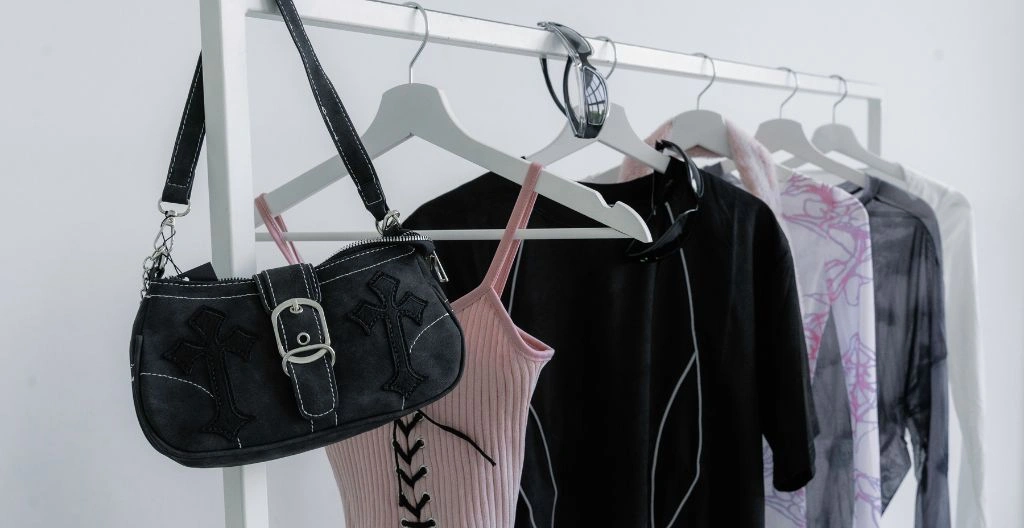Y2K style is back and it’s no longer a nostalgic footnote but a dominant trend reshaping the fashion landscape. For those who remember the late 1990s and early 2000s, this comeback isn’t just about clothes. It’s a cultural mood, fueled by irony, playfulness, and a dash of rebellion against minimalism. Think shiny fabrics, baby tees, butterfly clips, cargo pants, and low-rise everything. But the resurgence is more than simple replication. Today’s Y2K revival has been reimagined, refined, and adapted for a generation that mixes vintage flair with modern sustainability and personal expression.
This return is hardly accidental. Fashion cycles have always moved in roughly 20-year waves. Gen Z and younger Millennials, who grew up seeing these styles on icons like Britney Spears and Destiny’s Child, are reclaiming them, ironically or not, as authentic self-expression. Social media has accelerated the process, with TikTok creators and Instagram influencers showing off velour tracksuits, layered tanks, and logo-heavy accessories in daily “get ready with me” videos. Nostalgia marketing from brands Juicy Couture, Diesel’s revived denim campaigns, and Prada’s reissue of archival pieces has only fanned the flames.
What makes the Y2K revival so magnetic is its unapologetic boldness. It celebrates flashy color palettes, metallic sheens, and graphic logos with none of the self-seriousness that dominated the late 2010s minimalist wave. Where normcore and capsule wardrobes prized quiet luxury and neutral tones, Y2K style says the quiet part loud. It’s maximalist, fun, and embraces contradiction: pairing glitter with streetwear, dainty camis with oversized cargos. This clash of styles, eras, and textures lets people curate their look as a mood board of contradictions, reflecting the fragmented, remix-heavy nature of internet culture itself.
Accessories are at the heart of this renaissance. Early 2000s staples, such as baguette bags, chunky sneakers, and tinted sunglasses, complete the look, giving outfits that signature “pop star off-duty” feel. Hair accessories—think butterfly clips and bandanas—are everywhere on runways and in street style photography. Even the humble trucker hat has made an unexpected return, worn with vintage tees and baggy jeans for a cool, skater-inspired twist. These details transform an outfit from merely retro-inspired to a true Y2K homage that feels deliberate and styled.
Midway through this revival, there’s also been a shift toward a smarter, more curated approach. Many shoppers are hitting secondhand stores and vintage resellers to find authentic early-2000s pieces. Others opt for modern brands that reinterpret Y2K elements with better tailoring and sustainable fabrics. It’s not just about copying Paris Hilton circa 2003; it’s about adapting those aesthetics to today’s values, like mindful consumption and personal storytelling. In that sense, the Y2K revival isn’t simply a trend—it’s a cultural translation.
Of course, no discussion of this return would be complete without acknowledging how jewelry trends have evolved in parallel. Chunky plastic rings, charm necklaces, layered chokers, and even body jewelry have exploded in popularity. Designers are playing with nostalgia by bringing back Y2K symbols—smiley faces, stars, butterflies—in updated, grown-up forms. Jewelry has become the exclamation point of the Y2K outfit, making it easy to dip into the trend without fully committing to low-rise pants or mesh tops. It’s also where creativity runs wild, letting wearers personalize the aesthetic in unique ways.
Street style photographers and fashion week runways have highlighted the diversity of this movement. We’re seeing metallic minis paired with tailored blazers, or velour joggers dressed up with statement heels. Brands like Blumarine, Miu Miu, and Diesel have leaned hard into Y2K codes in recent collections, showing that high fashion is just as captivated by the era as fast fashion and indie designers. These interpretations range from literal—shiny halter tops, micro-minis—to conceptual, exploring the spirit of early internet optimism and rebellious youth culture.
Critics might say this resurgence is just another example of fashion’s constant recycling. But supporters argue that today’s Y2K comeback is more self-aware and inclusive. Where early-2000s fashion often enforced narrow beauty standards, today’s revival is about democratization and customization. Curvy models rock crop tops. Men wear low-rise jeans and rhinestone belts. Gender-fluid styling and diverse bodies help ensure this Y2K wave feels fresh, not regressive.
Ultimately, the return of Y2K style is about more than nostalgia—it’s about reclaiming fun. In an era defined by climate anxiety, social divides, and economic uncertainty, there’s a collective hunger for fashion that doesn’t take itself too seriously. Dressing up in butterfly tops and sparkly bags is a way to add color to uncertainty, to channel that fleeting pre-social-media optimism while remixing it for a savvier age. Whether you’re going full-on retro or just adding a baguette bag to your outfit, the Y2K revival proves that fashion will always find new ways to reinvent the past.

